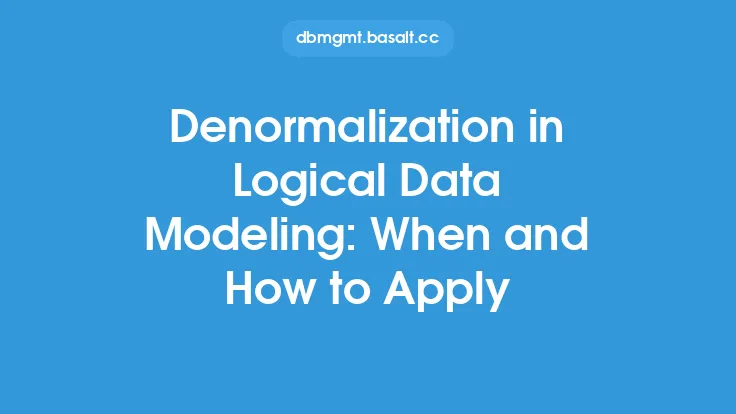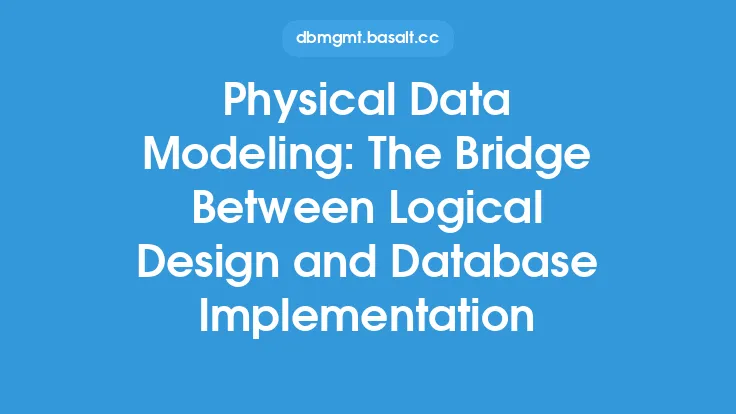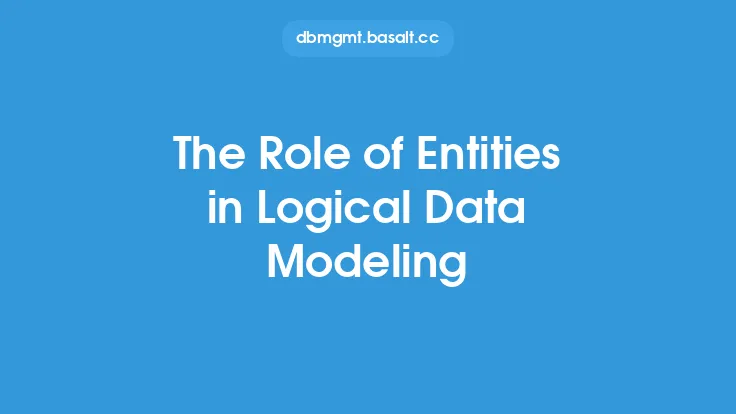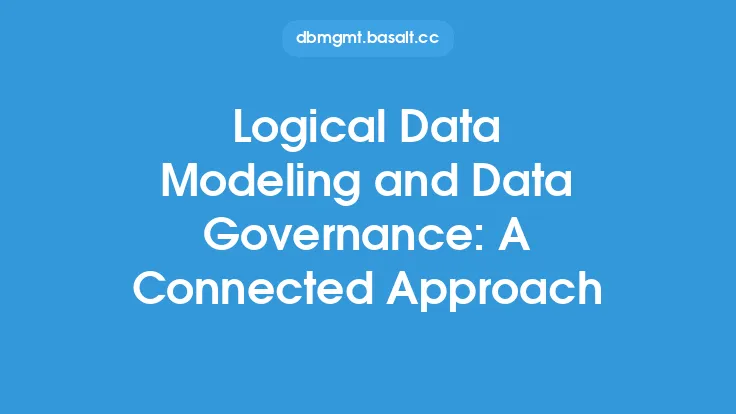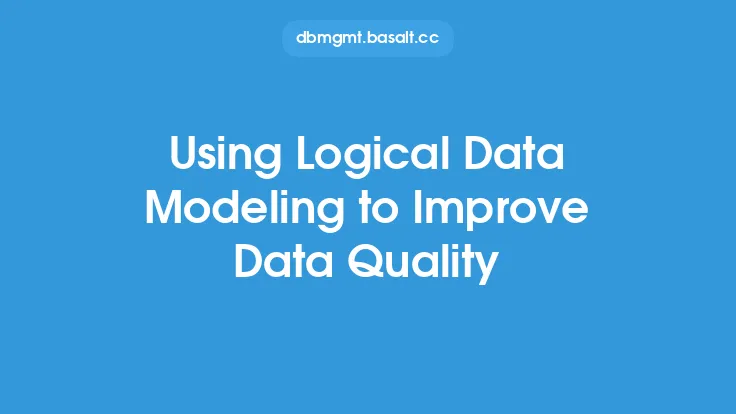Logical data modeling is a crucial step in the data modeling process, and understanding relationships between entities is a fundamental aspect of this process. In logical data modeling, relationships are used to describe how different entities interact with each other, and how they are connected. These relationships are essential in defining the structure of the data model and ensuring that the data is consistent and accurate.
Introduction to Relationships in Logical Data Modeling
In logical data modeling, relationships are defined as the connections between entities. These relationships can be used to describe how different entities interact with each other, and how they are connected. There are several types of relationships that can be defined in a logical data model, including one-to-one, one-to-many, and many-to-many relationships. Each type of relationship has its own unique characteristics and is used to describe different types of interactions between entities.
Types of Relationships in Logical Data Modeling
There are three main types of relationships that can be defined in a logical data model: one-to-one, one-to-many, and many-to-many relationships. A one-to-one relationship is a relationship between two entities where one instance of the first entity is related to only one instance of the second entity. For example, a customer may have only one address, and an address may be associated with only one customer. A one-to-many relationship is a relationship between two entities where one instance of the first entity is related to multiple instances of the second entity. For example, a customer may have multiple orders, and an order is associated with only one customer. A many-to-many relationship is a relationship between two entities where multiple instances of the first entity are related to multiple instances of the second entity. For example, a customer may have multiple orders, and an order may be associated with multiple customers.
Defining Relationships in Logical Data Modeling
Defining relationships in a logical data model involves identifying the entities that are related and the type of relationship that exists between them. This can be done by analyzing the business requirements and identifying the interactions between different entities. For example, in a sales database, the entities may include customers, orders, and products. The relationships between these entities may include a one-to-many relationship between customers and orders, and a many-to-many relationship between orders and products. Once the relationships have been identified, they can be defined in the logical data model using relationship symbols and notation.
Relationship Notation in Logical Data Modeling
Relationship notation is used to represent relationships between entities in a logical data model. There are several different notations that can be used, including entity-relationship diagrams (ERDs) and object-role modeling (ORM). ERDs use a graphical notation to represent entities and relationships, with entities represented as rectangles and relationships represented as lines. ORM uses a more formal notation to represent entities and relationships, with entities represented as objects and relationships represented as roles. The choice of notation will depend on the specific requirements of the project and the preferences of the data modeler.
Cardinality and Optionality in Relationships
Cardinality and optionality are two important concepts in relationships in logical data modeling. Cardinality refers to the number of instances of one entity that can be related to an instance of another entity. For example, in a one-to-many relationship, the cardinality is one on the "one" side and many on the "many" side. Optionality refers to whether an instance of one entity must be related to an instance of another entity. For example, in a one-to-one relationship, an instance of one entity may be optional, meaning that it does not have to be related to an instance of the other entity. Understanding cardinality and optionality is essential in defining relationships in a logical data model.
Relationship Constraints in Logical Data Modeling
Relationship constraints are used to define the rules that govern relationships between entities in a logical data model. There are several different types of relationship constraints, including referential integrity constraints, unique constraints, and check constraints. Referential integrity constraints ensure that relationships between entities are consistent and that instances of one entity are related to valid instances of another entity. Unique constraints ensure that each instance of an entity has a unique combination of values. Check constraints ensure that data conforms to specific rules or conditions. Relationship constraints are essential in ensuring the integrity and consistency of the data.
Implementing Relationships in a Database
Once the relationships have been defined in the logical data model, they can be implemented in a database. This involves creating the necessary tables and relationships in the database, and defining the constraints that govern the relationships. The specific implementation will depend on the database management system being used, but the principles of relationship definition and implementation remain the same. It is essential to ensure that the relationships are implemented correctly to ensure the integrity and consistency of the data.
Best Practices for Defining Relationships
There are several best practices that should be followed when defining relationships in a logical data model. These include ensuring that relationships are clearly defined and documented, using consistent notation and terminology, and ensuring that relationships are consistent with the business requirements. It is also essential to ensure that relationships are properly normalized to avoid data redundancy and improve data integrity. Additionally, it is important to consider the scalability and performance implications of the relationships, and to ensure that they are optimized for the specific use case.
Common Challenges and Pitfalls
There are several common challenges and pitfalls that can occur when defining relationships in a logical data model. These include failing to properly define relationships, using inconsistent notation and terminology, and failing to consider the scalability and performance implications of the relationships. Additionally, it is common to encounter data quality issues, such as data redundancy and inconsistency, if the relationships are not properly defined. It is essential to be aware of these challenges and pitfalls, and to take steps to avoid them.
Conclusion
In conclusion, relationships are a fundamental aspect of logical data modeling, and understanding how to define and implement them is essential for creating a robust and scalable data model. By following best practices and avoiding common challenges and pitfalls, data modelers can ensure that their relationships are properly defined and implemented, and that the data is consistent and accurate. Whether you are working with a relational database or a NoSQL database, understanding relationships is crucial for ensuring the integrity and consistency of the data, and for supporting business intelligence and analytics applications.
